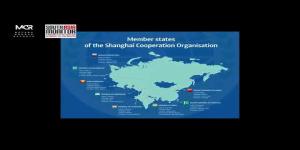India's pivotal maritime role in maintaining a 'free and open' Indo Pacific
The 12th edition of Ex Milan, held in February 2024 at Visakhapatnam, in southern India, involved the largest-ever participation, featuring the navies of over 50 countries and nearly 20 ships.

US Secretary of State Marco Rubio, Indian External Affairs Minister S Jaishankar, Japanese Foreign Minister Takeshi Iwaya, and Australian Foreign Minister Penny Wong, meeting on the sidelines of US President Donald Trump’s inauguration ceremony at Washington DC and pledging the group’s commitment to a “free and open Indo-Pacific where the rule of law, democratic values, sovereignty, and territorial integrity are upheld and defended”, was interpreted in media as a message to China, which has been flexing its muscles in the strategically important region.
Though Quad was not configured or performed as a security alliance, the navies of its member countries and other countries have been engaged with the Indian Navy in many exercises conducted annually or fairly frequently in the Indian Ocean and Indo-Pacific regions and thereby established a security buffer in the important maritime theatre.
It is thanks to Japanese Prime Minister Shinzō Abe that the concept of Indo Pacific became accepted. Addressing the Indian Parliament in August 2007, when he came to the aspect of security of the sea lanes linking the Indian and Pacific Oceans, he referred to the "confluence" of these two oceans being "the dynamic coupling as seas of freedom and of prosperity" in the "broader Asia". In the academic discourse relating to such maritime security issue in the Indo-Pacific, the first articulation was carried by a paper published in January 2007 by the Manohar Parrikar Institute of Defence Studies and Analyses (MPIDSA), New Delhi as a result of its earlier consultation with the Japan Institute of International Affairs (JIIA). From 2010 onwards, the term Indo-Pacific acquired prominence within the Indian government and since about 2011 onwards the term began to be used frequently by strategic analysts and high-level government/military leadership in Australia, Japan and the United States to denote the region.
However, a formal/official documented articulation of the term first appeared in Australia's Defence White Paper, 2013. It is also "symbiotically linked" with the Quadrilateral Security Dialogue—an informal grouping of like-minded democracies in the region, comprising Australia, India, Japan, and the United States, which came about following the 26 December 2004 Tsunami.
India's geostrategic location
The Indian Ocean connects to the Pacific Ocean through the Strait of Malacca. This narrow waterway lies between the Malay Peninsula and the Indonesian island of Sumatra, linking the Andaman Sea (part of the Indian Ocean) to the South China Sea (part of the Pacific Ocean). Thus the Indian Ocean's maritime security and trade routes are critical to the overall stability of the Indo-Pacific region. It is here that the Indian Navy has played a major and effective role since the end of the colonial era by patrolling silently in the extensive Indian Ocean region, which for some decades after India’s freedom from British rule was somehow never acknowledged by the major powers or spoken about by New Delhi.
When India drove out the Portuguese from Goa, Daman and Diu in 1961, there was an exclamation – “Oh, India has a Navy!” Ten years later, when in 1971, Indian Navy pulverised the Pakistan Navy and faced the great US 7th Fleet entering Indian waters without blinking, so to speak, there was some silent acknowledgement. Thereafter it increasingly got approached by many countries for training their personnel and/or exercising together.
Several countries, including the United States, Japan, Australia, India, China, France, South Korea, Indonesia, and most of the Association of Southeast Asian Nations (ASEAN) members have significant interest in the Indian Ocean and Indo-Pacific region due to its strategic importance for trade, security, and access to resources. With India’s geostrategic location and its security, it is imperative for it to play a pivotal role as a major maritime power in the area. The India Navy has developed an extensive outreach in the IOR.
Big-power maritime engagement
In 1995, Indian Navy, as part of India’s Look East policy, began a multilateral maritime exercise codenamed Milan (meaning meeting/unification/confluence). The biennial event features professional exercises and seminars, social events and sporting fixtures between participating nations. The navies of Indonesia, Singapore, Sri Lanka and Thailand participated in the inaugural edition. The 12th edition of Ex Milan, held in February 2024 at Visakhapatnam, in southern India, involved the largest-ever participation, featuring the navies of over 50 countries and nearly 20 ships.
Exercise Malabar, a bilateral one between India and the US, initiated in 1992 gained further traction as a significant maritime engagement and was joined by Japan and Australia. In October 2024, the 28th edition of this exercise was conducted by Indian Navy’s Eastern Naval Command in two distinct phases both at harbour and on the high seas. This high-tempo event featured destroyers, frigates, corvettes and fleet support ships along with long range maritime patrol aircraft, jet aircraft, integral helicopters and submarine assets. The drills included live weapon firings, complex surface, anti-air and anti-submarine warfare drills and joint manoeuvres. The exercise is alternately conducted in the Indian and Pacific Oceans each year.
India-France strategic cooperation began in 1997 with plans for making submarines for India and in 2001 a bilateral exercise codenamed Varuna began and evolved significantly over the years. The conduct of the 22nd edition of Varuna hosted by France in September 2024, in the Mediterranean Sea demonstrated the Indian Navy’s outreach and commitment towards sustained operations far away from the Indian Ocean Region (IOR) also.
In 2019, France instituted a mega maritime exercise La Perouse, which began with participation of navies of France, Australia, Japan, and the US. India joined this exercise for the first time in its second edition in 2021, a year after India-France strategic cooperation became more significant. Since 2020, France joined the Indian Ocean Rim Association (IORA) and Indian Ocean Commission (IOC), an international organization that works on issues related to the Indian Ocean.
From 16 to 24 January 2025, the French Carrier Strike Group (CSG), led by the aircraft carrier Charles De Gaulle, conducted the 5th edition of the multinational exercise La Perouse 25, in which nine nations- France, India, US, UK, Australia, Canada, Indonesia, Malaysia and Singapore participated. This exercise was held in the straits between the Indian Ocean and the Pacific Ocean-Malacca, Sunda and Lombok-which are all mainstays of global maritime trade. The aim was strengthening maritime safety, developing interoperability and the ability to act collectively. They also trained in the use of IORIS, a communication and coordination system dedicated to the exchange of information, documents in order to effectively and collectively face a maritime crisis in a synchronized manner.
India’s relationship with erstwhile USSR which amounted to decades of purchase of over 70% of main arms and equipment for Indian Army, Navy and Air Force, ended with the its breakup in 1991.in While India’s military cooperation with Russia began in 1997, the Russian navy had no presence in the Indian Ocean till 2001, when a contingent of naval ships, including anti-submarine warfare vessels and a tanker docked at Mumbai. The first India-Russia bilateral naval exercise Indra (combo of India and Russia) was conducted both on the Western and Eastern seaboards in May and June 2003.
Immediately after the 2004 Indian Ocean tsunami, Indonesia requested assistance from India, which responded by sending naval ships with relief supplies, launching "Operation Gambhir" to deliver aid, and was one of the first countries to provide support following the disaster. In 2018, the two nations adopted the "Shared Vision of India-Indonesia on Maritime Cooperation in the Indo-Pacific” and welcomed the ratification of the agreement concerning Cooperation in the field of Defence to further deepen military ties. While for over two decades the biannual India–Indonesia Coordinated Patrol has been on, further progress was made with conduct of periodic bilateral exercises-Army (Ex Garuda Shakti) and Navy (Ex Samudra Shakti) and regular participation in each other’s multilateral exercises- Milan, Komodo, Tarang Shakti and Super Garuda Shield as well as cadet exchanges between the Naval Academies and the National Defence University/ Academy
One country which has considered the Indian Navy and Coast Guard very professional and effective is Japan. Even after May 1998 when India-Japan relations nosedived because of India’s second peaceful nuclear test, maritime cooperation between the two nations continued uninterruptedly. In 2012, Indian Navy and Japan Maritime Self Defence Force began the bilateral Japan-India Maritime Exercise (JIMEX), the last edition of which was held in 2024 at Yokosuka, Japan.
Expanding naval cooperation
India and Vietnam have been conducting joint maritime exercises, primarily through the "VINBAX" military exercise, for several years, with the most recent iteration being "VINBAX-23" which took place in Hanoi, Vietnam, marking an 11-day joint military training exercise amidst concerns about China's activities in the South China Sea; signifying a growing partnership between the two nations in recent times. In 2021 the two navies exercised in the South China Sea.
While India and Singapore have a long history of friendship and extensive cooperation across a wide range of areas, the relations between both were elevated to Comprehensive Strategic Partnership during the visit of Prime Minister Narendra Modi to Singapore in September 2024. India and Singapore have several structured defence interactions, spanning from political leadership down to staff levels of all three-armed forces. There are bilateral exercises for all three services, viz, Army – Exercise Agni Warrior, Navy – Exercise Simbex and Air Force – Joint Military Training. 4th edition of Singapore-India-Thailand Maritime Exercise (Sitmex) was hosted by India in November 2024. Singapore co-hosted the inaugural ASEAN – India Maritime Exercise in Singapore in 2023. Singapore participated in all editions of biennial Exercise Milan since its inception in 1995.
In May 2019, the Indian Navy, for the first time, conducted joint exercises with the U.S., Japanese, and Philippine navies in the South China Sea. In 2020 Indian Navy held military exercises in the South China Sea with the navies of Vietnam, the Philippines, Malaysia and Australia and with Indonesia in August 2021. In May 2023, India for the first time sent warships to participate in a two-day joint exercise with the navies of seven ASEAN states in the South China Sea.
India significantly increased military sales and assistance to the Philippines and Vietnam in January 2022, gifted a fully operational light missile frigate to Vietnam in June 2023 and delivered 100 BrahMos supersonic anti-ship missiles exported to the Philippines in April 2024.
While India has not been assertive enough in dealing with Chinese People’s Liberation Army along the 3488 km- long land border, its strong naval presence and growing bilateral and multilateral maritime cooperation with countries in the Indo Pacific geography are seen as a effective security bulwark against Chinese misadventures in a region that is critical to global trade and commerce.
(The author, a strategic affairs analyst, is former spokesperson, Defence ministry and Indian Army. He can be reached at wordsword02@gmail.com)









Post a Comment